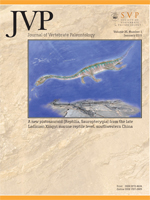The holotype of Pliophoca etrusca, a partial skeleton from the late Pliocene (Piacenzian) of central Italy, is redescribed. Referred material from the Pliocene of Italy, France, and Spain is compared with the holotype and reassigned to Pliophoca cf. P. etrusca. New dental and postcranial material from the late Pliocene and Pleistocene of Italy is referred to Monachini indeterminate. Purported referred material from Pliocene deposits in the eastern North Atlantic (Lee Creek Mine, North Carolina) likely represents several new monachine taxa rather than Pliophoca etrusca. Using the largest novel data set to date, including extant and fossil monachines and comprising morphological and molecular data, we inferred phylogenetic relationships among monachine phocids. Results of morphological and combined analyses revealed that Pliophoca etrusca is most closely related to the Mediterranean monk seal, Monachus monachus, although this result is not strongly supported. Based on our phylogenetic framework, the origin of Monachini occurred during the early-middle Miocene, centered in either the Tethys Sea orthe West Atlantic.
How to translate text using browser tools
1 January 2015
A Reevaluation of Pliophoca etrusca (Pinnipedia, Phocidae) from the Pliocene of Italy: Phylogenetic and Biogeographic Implications
Annalisa Berta,
Sarah Kienle,
Giovanni Bianucci,
Silvia Sorbi
ACCESS THE FULL ARTICLE





